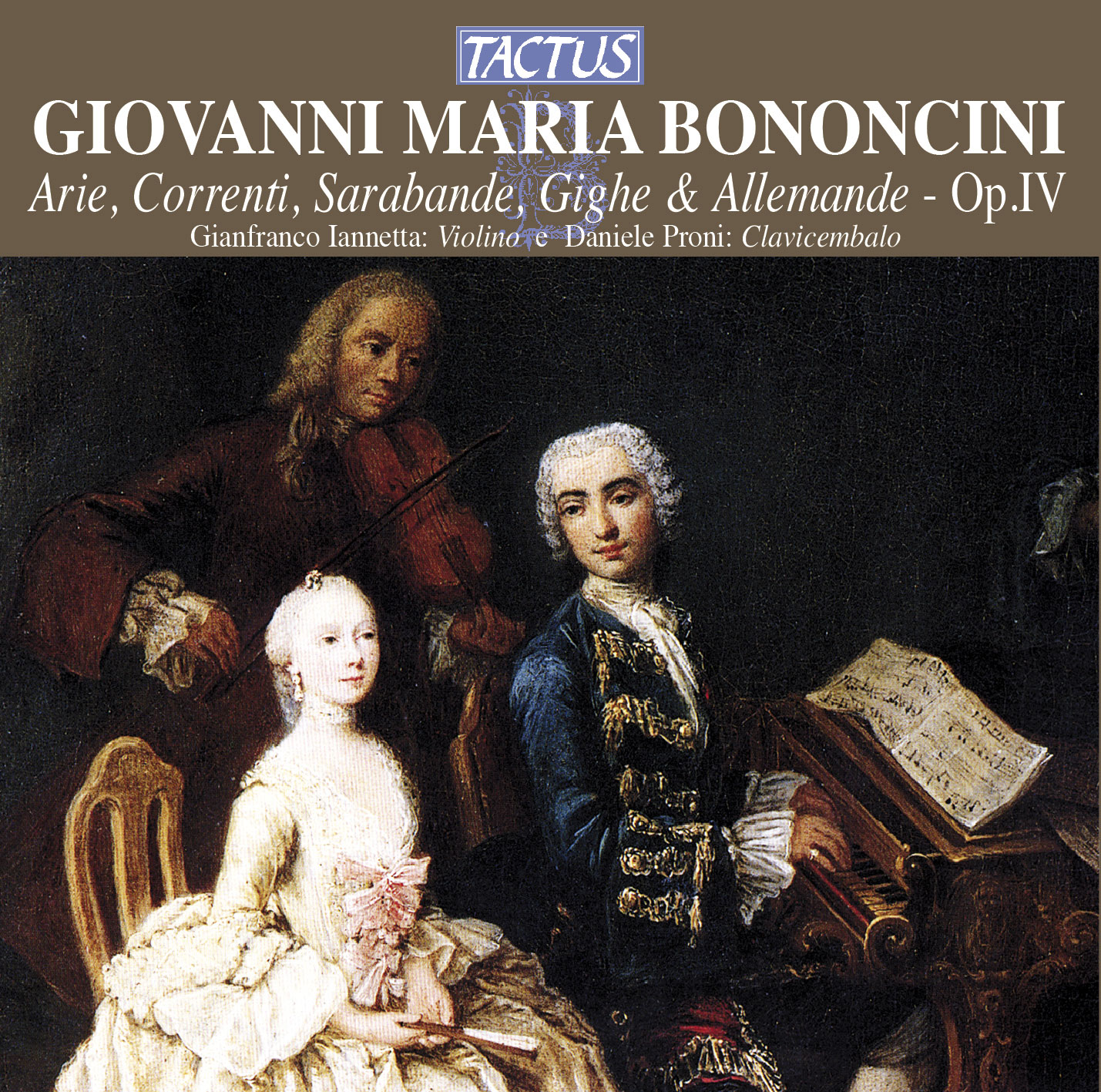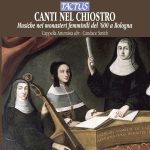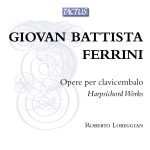BONONCINI GIOVANNI MARIA
In order to understand Bononcini’s opus 4, it is opportune to clarify the concept of the seventeenth-century sonata.
This term regularly referred only to the church sonata, where the various movements—or rather successive moments–were underlined by the organ and indicated by their tempo (in general, Allegro and Adagio, though at times these indications were missing).
In the case of the chamber sonata, the terminology varied according to location: in Italy, a list of the various dances sufficed, while Germany, France and England preferred the term partita, ordre, suite, and the suite de lessons.
This genre was still quite free and as yet lacked the obligatory four canonic dances. Indeed, variety was even provided by the occasional aria, arietta or balletto. While elsewhere the series of dances was associated with the harpsichord, Italy instead insisted on violin-writing for one or two voices. The trio sonata in no way predominated over other ensembles, which included up to four or five instrumental voices. Music for solo violin was equally common, with the possibility of adding a second violin if desired.
The musical dance was, in short, already a very stylized composition—in the chamber, the concert, or merely as listening entertainment–but had nonetheless not forgotten its dance origins, and some publications even distinguished dances intended “da ballo” from those “da camera” (those by Bononcini and Vitali of 1667).
In this mass of instrumental music written for court (or church) purposes, Bononcini’s op. 4 does not emerge for those formal aspects, which were common to both a popular school and a national culture. Instead, they shine uniquely for their spontaneity, grace, melodic invention and well-chosen timbre. Each dance consists of two repeated parts, which are almost always rather brief. All have a title, which is clearly derived from some surname.
The vast majority of them begins with a rhythmic upbeat, those “in stil francesce” have a typical dotted rhythm, and the same key is often shared by two or three consecutive pieces.
The melodic line, nonetheless, is always new and vivacious, with character and personality, and despite a few decisive references to the toccata and more than one suggestive intimation of vocal music, these works are always exquisitely, intrinsically, idiomatic of the violin.
Tracklist
Bononcini, Giovanni Maria
Arie, correnti, sarabande, gighe et alemande, Op. 4
1 - Aria: L'Anghisciola (1:50)
2 - Corrente: La Molza (0:58)
3 - Aria: La Palavicina (1:42)
4 - Corrente: La Strozza (1:06)
5 - Sarabanda (1:39)
6 - Corrente: La Barbiera (1:15)
7 - Aria: La Pozza (3:27)
8 - Corrente: La Montanara (1:10)
9 - Sarabanda (1:50)
10 - Aria: La Fontana (3:10)
11 - Corrente: La Nigrella (1:23)
12 - Sarabanda (1:44)
13 - Giga: La Cimicella (1:58)
14 - Sarabanda (1:33)
15 - Corrente: La Bufalina (2:45)
16 - Giga: La Marsiana (2:24)
17 - Sarabanda (1:36)
18 - Corrente: La Gherardina (1:25)
19 - Allemanda: La Fogliana (3:42)
20 - Corrente: La Pegolotta (2:34)
21 - Allemanda: La Magnanima (1:53)
22 - Sarabanda (1:14)
23 - Corrente: La Caporiaga (1:35)
24 - Corrente: La Brusciata (1:30)
- Composer: BONONCINI GIOVANNI MARIA
- Performers: Gianfranco Iannetta, violino-Daniele Proni, clavicembalo
- Historical Period: Early Baroque
- Code: TC 640201
- Edition: November 2001
- Barcode: 8007194102031
- Set: 1
- Total tracks: 24
- Total duration: 00:45:37







